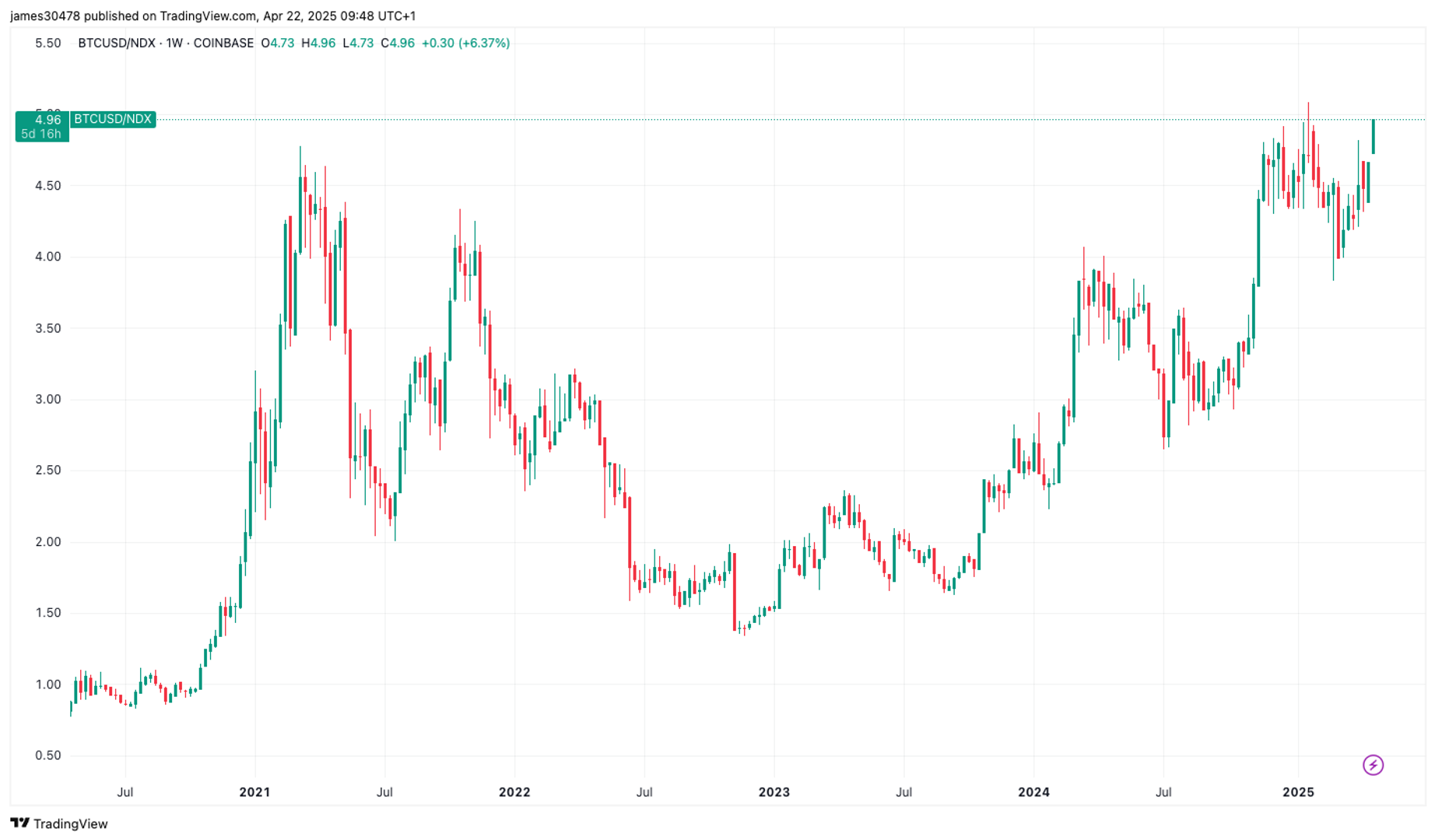Uncategorized
The Protocol: Solana’s Allure for Devs; Avalanche’s Big Upgrade

Welcome to The Protocol, CoinDesk’s weekly wrap-up of the most important stories in cryptocurrency tech development. I’m Marc Hochstein, CoinDesk’s deputy editor-in-chief for features, opinion and standards.
In this issue:
Solana was the biggest draw for new crypto developers in 2024
No wonder: Solana’s transaction volume is off the charts
Coinbase alums take next step toward no-code blockchain development
Kraken’s ‘Ink’ layer-2 goes live
Avalanche activates biggest-ever upgrade
Ethereum’s ENS picks Consensys’ tech for its L2
Bitcoin’s Stacks L2 gets an automated market maker for Runes
Most Influential 2024: EigenLayer’s Sreeram Kannan
This article is featured in the latest issue of The Protocol, our weekly newsletter exploring the tech behind crypto, one block at a time. Sign up here to get it in your inbox every Wednesday.
Network News
NEW DEVS ❤️SOLANA: The Solana ecosystem, ground zero for the memecoin craze, was the most popular blockchain among new developers this year, according to a report released last week by Electric Capital. In July, this community became the first since 2016 to bring on board more devs than Ethereum. Solana attracted 7,625 new developers in 2024, the most of any chain and a little over 1,000 more than Ethereum. The results underscore the challenge Ethereum faces as rival smart contract platform Solana’s low fees and fast transactions attract investment and talent. Read more.
SPEAKING OF SOLANA: Solana’s network activity has lit up as the Pudgy Penguins NFT project debuted its native token, PENGU, on the programmable blockchain. Solana registered a total transaction tally of 66.9 million Tuesday, the highest daily volume since its inception in 2020, according to data source Artemis. To highlight how busy it was, Solana’s transaction count eclipsed the total of all other major chains combined. Read more
THE INK IS DRY: Kraken, the seventh-largest crypto exchange, said its layer-2 rollup network, built on top of the Ethereum blockchain, has gone live. The network, called Ink, is Kraken’s answer to Base, the highly successful blockchain launched by rival exchange Coinbase. Like Base, Ink is based on the OP Stack, a customizable framework that lets developers build their own rollups using Optimism’s technology. The team had originally planned for Ink to go live in early 2025, so the launch of its main network is ahead of schedule. Read more
AVALANCHE UPGRADE: Avalanche, a layer-1 blockchain launched in 2020 that’s now the tenth-largest by total value locked (TVL), activated its highly anticipated Avalanche9000 upgrade Monday, marking the ecosystem’s biggest technical changes to date. The network has been prepping for these changes for months, with new features that will cut the costs for sending transactions, operating validators and building applications on the network. Leaders at Avalanche previously said that part of the goal with the upgrade is to attract developers to Avalanche and encourage them to create customized blockchains using its technology, known as subnets, or “L1s.» Read more.
A BOON FOR RUNES: Crypto degens have a new – and, if all goes according to plan, faster, cheaper and safer – way to trade Runes, the Bitcoin ecosystem’s answer to memecoins. An automated-market maker (AMM) for the Runes protocol went live on Wednesday on Stacks, following the unveiling of the layer-2 network’s native BTC-backed asset sBTC on Tuesday. It’s the first AMM for such tokens on Stacks. The teams behind decentralized exchange (DEX) Bitflow Finance and Bitcoin bridge Pontis developed the AMM. Runes launched in April and spurred a flurry of activity, paying 78.6 BTC ($8.18 million) in fees in the first 90 minutes. However, less than a month later, this excitement waned considerably, with fees dropping more than 50%. Bitflow’s aim is for its AMM to help Runes scale and address some of the shortcomings holding it back. Read more.
ENS PICKS L2 TECH: ENS Labs, the company behind the Ethereum Name Service, has picked Linea’s technology to build its upcoming layer-2 network, Namechain. Linea is a zero-knowledge rollup that came out in July 2023 and was built by Ethereum infrastructure giant Consensys. It is the seventh-largest rollup network, according to L2Beat, with $1 billion locked in its ecosystem. Rollups are a special type of blockchain where one can transact faster and at a lower cost. There are two kinds of rollups: optimistic and zero-knowledge. Optimistic rollups use optimistic proofs, which have a seven-day window to dispute transactions before they are finalized. Zero-knowledge rollups, by contrast, finalize proofs within minutes. ENS has been described as «the phone book for Web3,» but a more precise analogy is the web’s domain name service (DNS). The domain name «CoinDesk.com» is easier to remember and type than a numerical IP address. Similarly, ENS handles like parishilton.eth, which the namesake heiress acquired in 2021, are more relatable than the strings of letters and numbers that make up Ethereum wallet addresses. For this service, «we need fast finality,” said Nick Johnson, the founder and lead developer of ENS. That’s because “you want to be able to update your ENS name and have the chain reflect it in the smallest interval possible. And to do that and have it remain decentralized and secure, we need fast finality, and optimistic roll-ups can’t deliver that.» Read more.
NO CODE, NO PROBLEM? Patchwork, a startup focused on simplifying blockchain and smart-contract development founded by former Coinbase employees, has released the next version of its low-to-no-code tools for building decentralized applications (dapps). Currently linked to Coinbase’s Base and backed by Coinbase Ventures, the “Create-Patchwork” picks-and-shovels approach lowers the barriers to building blockchain applications and attaching data to them. Following the trend toward easily generated content, the complex world of blockchains and smart-contract design is on a path to no-code applications, or a “text-to-app” experience. Create-Patchwork is the first of several features the team plans to roll out in early 2025 and a foundational step to enable creators to generate contracts and applications in seconds using natural language inputs. “Patchwork is an Ethereum protocol that makes it really easy to build dynamic on-chain applications,” co-founder Kevin Day said in an interview. “It lets on-chain things own other on-chain things, and it allows anyone to attach programmable data to on-chain things.” Read more
EIGENLAYER’S SREERAM KANNAN: KING OF THE PROFESSOR COINS

For a crypto founder who’s attracted so much controversy, Sreeram Kannan is surprisingly sanguine.
In a wide-ranging interview after his selection as one of CoinDesk’s “Most Influential” figures in crypto for 2024, the EigenLayer founder was generous with his time, chatting more than an hour beyond our scheduled slot. I was surprised at his openness because the last time we spoke, a colleague and I had just published an investigation into potential conflicts of interest at his company, Eigen Labs, and in the interim Kannan had disavowed our reporting point-by-point on a Blockworks podcast.
This time, Kannan emerged in a different light. Whatever his misgivings about CoinDesk’s past coverage, they didn’t seem top-of-mind.
What emerged wasn’t the portrait of a defensive tech founder, but rather that of a driven, thoughtful academic-turned-entrepreneur still adjusting to a spotlight few in this industry ever enjoy. Instead of bitterness or evasion, I found ambition, reflection and a quiet kind of excitement.
Kannan seemed as astonished as anyone by how swiftly EigenLayer had transformed from a concept into one of crypto’s most talked-about experiments, telling CoinDesk that he continued to view EigenLayer as a “scrappy startup.”
Over the past 12 months, EigenLayer — which allows emerging blockchain applications to borrow Ethereum’s robust security — went from a relative unknown to an industry heavyweight. The platform raised more than $100 million from venture firms including Andreessen Horowitz and, before even fully launching, drew hundreds of millions of dollars in deposits from crypto users seeking extra yield. Many were incentivized by a viral points program that investors hoped would translate into a lucrative future token airdrop.
EigenLayer’s success during the bear market was striking, and Kannan may have played a larger role than any other entrepreneur in revitalizing decentralized finance on Ethereum. But not everything went according to plan. Industry critics took issue with the EIGEN token distribution plan — which locked up tokens for months and barred claimants from certain geographies — as well as the platform’s slower-than-expected feature rollout and concerns about “rehypothecation,” or the reuse of collateral for multiple purposes. In August, the CoinDesk investigation (that Kannan disputed in the podcast) raised questions about EigenLayer’s conflict-of-interest policies, which may have allowed employees preferential access to tokens powered by its platform.
None of this seemed to derail Kannan’s intellectual ascent. Beyond running Eigen Labs, he still holds a position as an affiliate professor of electrical and computer engineering at the University of Washington, and his theory of “restaking” — letting people reuse staked Ethereum assets to secure other networks — has sparked a wave of innovation and copycats. He’s become a familiar face on the conference circuit, where he unpacks his vision of blockchains as tools for solving humanity’s endless “coordination problems.”
Blockchains, Kannan says, “are the biggest upgrade to human civilization since the U.S. Constitution.”
CLICK HERE FOR THE FULL PROFILE BY COINDESK’S SAM KESSLER:
Money Center
‘Wrapped’ in intrigue
Coinbase Says It Nixed wBTC Because Justin Sun Posed ‘Unacceptable Risk’
WBTC Episode ‘Reopened Old Wounds’ of Centralized Failures: Bitcoin Builders Association
Deals and grants
Stablecoin Payments Platform BVNK Raises $50M to Fuel U.S. Expansion
RWA-Focused Plume Raises $20M from Brevan Howard, Others Ahead of Mainnet Launch
Custody Firm Taurus Partners With Temenos Bringing Crypto Wallets to Thousands of Banks
Regulatory and policy
Next U.S. Senate Banking Chair Calls Crypto ‘Next Wonder’ of World
Calendar
Jan 9-12, 2025: CES, Las Vegas
Jan. 15-19: World Economic Forum, Davos, Switzerland
January 21-25: WAGMI conference, Miami.
Jan. 24-25: Adopting Bitcoin, Cape Town, South Africa.
Jan. 30-31: PLAN B Forum, San Salvador, El Salvador.
Feb. 1-6: Satoshi Roundtable, Dubai
Feb. 19-20, 2025: ConsensusHK, Hong Kong.
Feb. 23-24: NFT Paris
Feb 23-March 2: ETHDenver
March 18-19: Digital Asset Summit, London
May 14-16: Consensus, Toronto.
May 27-29: Bitcoin 2025, Las Vegas.
Uncategorized
Bitcoin Closing In on Historic Breakout vs Nasdaq

Bitcoin (BTC) is on the cusp of breaking out relative to the Nasdaq 100 Composite, with the current BTC/Nasdaq ratio sitting at 4.96. This means it now takes nearly five Nasdaq units to match the value of one bitcoin. The previous record of 5.08 was set in January 2025, when bitcoin hit its all-time high of over $109,000.
Historically, each market cycle has seen the ratio reach new highs—2017, 2021, and now 2025—highlighting bitcoin’s continued outperformance against the Nasdaq.
Across multiple timeframes, bitcoin is increasingly diverging from U.S. tech stocks. Year-to-date, bitcoin is down just 6%, compared to the Nasdaq’s 15% decline. Since Donald Trump’s election victory in November 2024, bitcoin has rallied 30%, while the Nasdaq has fallen 12%.
When measured against the «Magnificent Seven» mega-cap tech stocks, bitcoin remains around 20% below its all-time high from February this year. This indicates that while bitcoin has shown strength, the top tech names are holding up better than the broader Nasdaq Composite.
Strategy (MSTR), a well-known proxy for bitcoin exposure, is also holding up better than the U.S tech stocks. Since joining the QQQ ETF on Dec. 23, MSTR is down 11%, while the ETF itself has dropped over 16%. The divergence has become more pronounced in 2025: MSTR is up 6% year-to-date, compared to QQQ’s 15% decline.
Uncategorized
Bitcoin Runs Into Resistance Cluster Above $88K. What Next?

This is a daily technical analysis by CoinDesk analyst and Chartered Market Technician Omkar Godbole.
Bitcoin’s (BTC) bullish advance has encountered a resistance zone above $88,000, marked by crucial levels that could make or break the ongoing recovery rally.
The resistance cluster’s first and perhaps most critical level is the 200-day simple moving average (SMA) at $88,356. The SMA is widely regarded as a key indicator of long-term momentum. Early this month, Coinbase institutional analysts called the downside break of the 200-day SMA in March a sign of the onset of a potential crypto winter.
So, a fresh move above the 200-day SMA could be taken to represent a renewed bullish shift in momentum.
Such a move would trigger a dual breakout, as the Ichimoku cloud’s upper end is located close to the 200-day SMA. A move above the Ichimoku cloud is also said to reflect a bullish shift in momentum.
Developed by a Japanese journalist in the 1960s, the Ichimoku cloud is a technical analysis indicator that offers a comprehensive view of market momentum, support, and resistance levels. The indicator comprises five lines: Leading Span A, Leading Span B, Conversion Line or Tenkan-Sen (T), Base Line or Kijun-Sen (K) and a lagging closing price line. The difference between Leading Span A and B forms the Ichimoku Cloud.
The third and final level forming the resistance cluster is the high of $88,804 on March 24, from where the market turned lower and fell back to $75,000.

A make-or-break resistance zone?
Behavioural aspects of trading come into play when an asset approaches a resistance zone, especially at key levels like the 200-day SMA and the Ichimoku cloud.
Prospect theory suggests that people are typically risk-averse with respect to gains and risk-seeking with respect to losses, known as the “reflection effect.» So, as traders, people tend to be risk-averse while locking in profits and keep losing trades open.
This tendency is amplified when an asset encounters a significant resistance zone. Traders who entered the bitcoin market around $75K, anticipating a rebound, may feel pressured to take profits as the price approaches this resistance. Such selling could, in turn, slow the price ascent or even trigger a new downturn.
Conversely, if bitcoin successfully breaks through the resistance zone, the fear of missing out could prompt more traders to make bullish bets, further fueling bullish momentum and pushing the price higher.
Uncategorized
Bithumb to Split in Two as Crypto Exchange Inches Toward South Korean IPO

Bithumb plans to split its core crypto exchange business from other activities as it reorganizes in preparation for an initial public offering (IPO).
The Seoul-based company will split in two, with Bithumb Korea focusing solely on operating the core crypto exchange business. Bithumb Korea will be the entity seeking a public listing, local media reported, citing the country’s corporate registry.
The other unit, a newly created company called Bithumb A, will oversee venture investments, asset management and new business initiatives. The restructuring is set to take effect on July 31.
Bithumb A will consolidate the exchange’s investment arms, including Bithumb Partners, which has shifted from NFT and metaverse projects to financial product investments such as equities, bonds and convertible bonds. According to local media, Bithumb is in talks with licensed entities to offer these services in the country.
Bithumb Investment, which manages equity stakes and strategic partnerships with external companies, will also fall under Bithumb A’s oversight.
Last year Bithumb was said to be considering a NASDAQ listing, but now its plans have shifted to a listing on South Korea’s Kosdaq first, with a U.S. listing as a secondary objective.
Bithumb posted an operating profit of 130.8 billion won ($95 million) in 2024, reversing a 149 billion-won loss from the previous year, local media reported.
-

 Fashion6 месяцев ago
Fashion6 месяцев agoThese \’90s fashion trends are making a comeback in 2017
-

 Entertainment6 месяцев ago
Entertainment6 месяцев agoThe final 6 \’Game of Thrones\’ episodes might feel like a full season
-

 Fashion6 месяцев ago
Fashion6 месяцев agoAccording to Dior Couture, this taboo fashion accessory is back
-

 Entertainment6 месяцев ago
Entertainment6 месяцев agoThe old and New Edition cast comes together to perform
-

 Sports6 месяцев ago
Sports6 месяцев agoPhillies\’ Aaron Altherr makes mind-boggling barehanded play
-

 Business6 месяцев ago
Business6 месяцев agoUber and Lyft are finally available in all of New York State
-

 Entertainment6 месяцев ago
Entertainment6 месяцев agoDisney\’s live-action Aladdin finally finds its stars
-

 Sports6 месяцев ago
Sports6 месяцев agoSteph Curry finally got the contract he deserves from the Warriors





